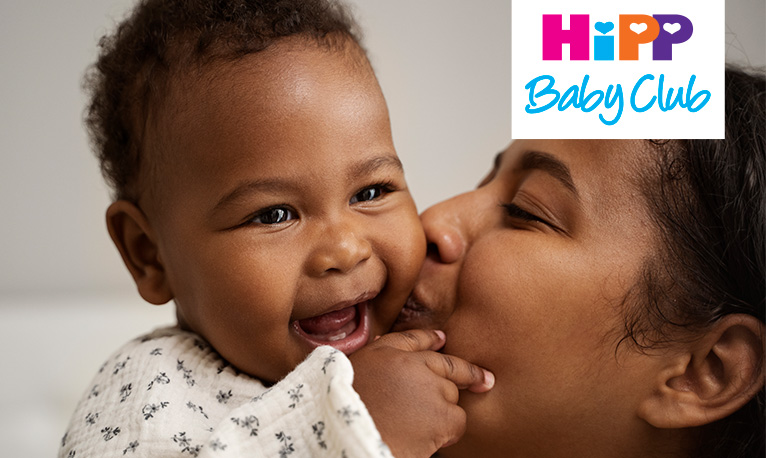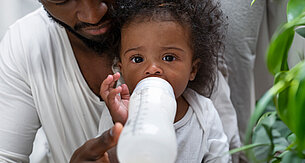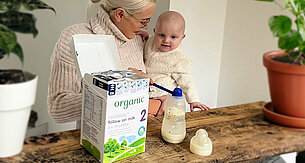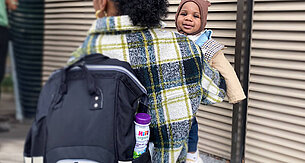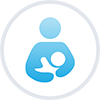Things you'll need for bottle feeding
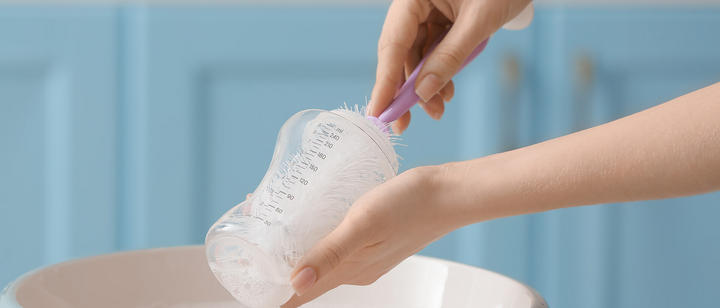
Things you'll need for bottle feeding
Before you get started bottle-feeding your baby, you’ll want to make sure you have everything you need to hand. You’ll need a number of bottles and teats, expressed breast milk or your chosen formula milk, sterilising equipment, bottle and teat cleaning brushes as well as any muslins or bibs you usually use when feeding your baby.
Finding the right bottle and teat for your baby
There are many different types of bottles and teats available. Make sure that you choose one with the right flow rate for your baby’s age.
Do also bear in mind that some specialist milks are thicker and therefore need a different teat, so it’s important to refer to the guidance on pack.
Sterilising Bottle-Feeding Equipment
It’s really very important that any equipment you use for bottle feeding is thoroughly sterilised before each feed, to keep your baby safe. When babies are small and their immune systems are still developing, they're more vulnerable to illness, so it makes sense to protect them from germs when you can.
How often to sterilise
You’ll need to sterilise bottles and teats until your baby is a year old - and it's a good idea to carry on sterilising as long as your baby is drinking from a bottle.
First, you'll need to rinse out bottles, teats, caps, covers, breast pumps, etc. after each use and wash them thoroughly, using a bottle brush and hot soapy water. Then rinse again and sterilise.
Other bits, such as feeding beakers, bowls and spoons, should be sterilised until your baby is 6 months old. After this, a thorough wash after each feed is enough to keep them clean.
Types of sterilisers
There are different methods for sterilising, and the one you choose really depends on what works best for you. Here are some of the options:
Steam sterilisers
These plug in and stand on the worktop. They heat small amounts of water into steam to kill bacteria. Follow the manufacturer's instructions for use, ensuring that the openings of bottles and teats are face down in the steriliser.
Microwave sterilisers
These work in the same way as steam sterilisers, but are used in the microwave rather than being plugged in and are usually quicker than the steam kind.
Cold-water sterilisers
A special tablet is added to a measured amount of water in a plastic container and the equipment is submerged in the sterilising solution. Follow the manufacturer's instructions and make up a fresh solution every day. Ensure that all the equipment is properly submerged, with no trapped air, and is kept under the solution with a floating cover. Rinse bottles and teats with boiled water before use.
Away on holiday or visiting friends?
Microwave and steam sterilisers are quite bulky, so if you are away on holiday or visiting relatives or friends, you could just take a supply of cold-water sterilising tablets with you and a container large enough to sterilise a bottle or two.
You can also buy disposable single-use bottles or disposable sterilising bags, which are easy to use. You place the bottle, teat, etc. in the special bag, add a small amount of water, then seal and microwave. Often, the bag can be re-used several times (read the manufacturer's instructions), so these can be good for overnight trips.
Some companies even sell a disposable travel kit which has all the bottle-feeding equipment you'll need for two weeks in one small box (cleverly, the box doubles up as a cold sterilising unit for the teats and bottle caps).
Alternatively you can sterilise your feeding equipment by boiling it, making sure of course, that all the items you want to sterilise in this way are safe to boil!
Boil the feeding equipment in a large pan of water for at least 10 minutes, making sure it all stays under the surface.
Teats tend to get damaged faster with this method, so check that teats and bottles are not torn, cracked or damaged before feeding baby.

